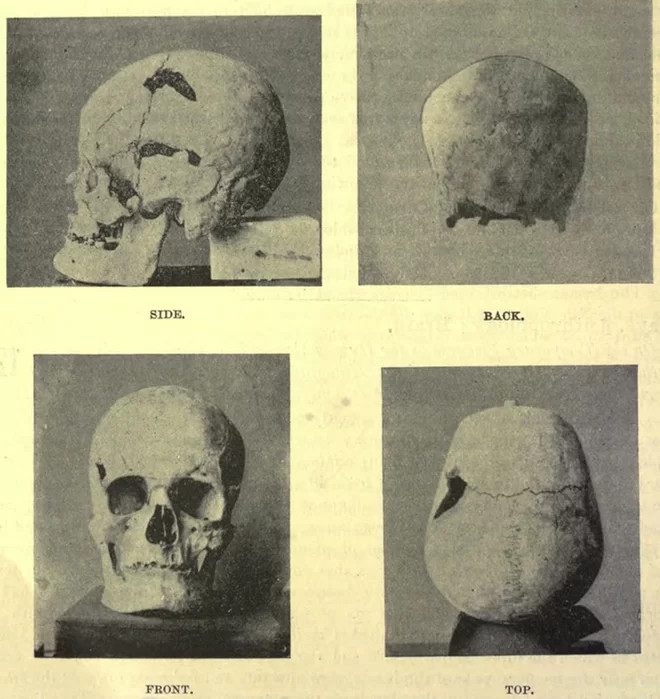Egyptian Pharaoh was the first to suffer from a giant disease
The mummy is said to belong to Sa-Nakht, the ancient Egyptian pharaoh, possibly the oldest "giant".
The skeleton of men found in 1901 in a tomb near Egypt's Beit Khallaf, with a height of 1,987 meters, possibly belonging to Sa-Nakht and pharaohs in the Third Dynasty around 2700 BC, according to Michael Habicht, an Egyptian from the Institute of Evolutionary Medicine at the University of Zurich, Switzerland. Previous studies have shown that the average height of men in this period was only about 1.7 meters, Live Science reported.

The skull of the pharaoh Sa-Nakht remains.
The kings of ancient Egypt were more likely to have a more adequate diet and better health than ordinary people, so their body size was also large. The nearly two-meter skeleton of the analysis of scientists is much larger than that of Ramsses II, the highest Egyptian pharaoh recorded, who lived after Sa-Nakht for more than 1,000 years and only 1.75 meters tall.
In the study published in August in The Lancet Diabetes & Endocrinology, Habicht re-analyzed the skull and skeleton of Sa-Nakht. Long bones provide evidence of superior growth, a clear sign of gigantism. The discovery indicates that the Egyptian pharaoh is the oldest case of this disease in the world. No other member of the Egyptian royal family has such a tall body.
"The study of the evolution of the disease is very important for today's medicine," Habicht said.
- The death of the last Pharaoh
- Find the giant statue of Egyptian pharaoh Psamtik I
- Play the giant phenomenon of Pharaoh power
- Egypt announced two giant pharaohs
- Identify the Egyptian pharaoh in the ancient tomb
- The 3,500-year-old seal of the Egyptian pharaoh
- The mysterious trumpet carries the curse of the Egyptian pharaoh
- Pharaoh 'rises': Close up of the great 3,000-year-old sight of Egypt
- The 4,300-year-old head statue was smashed by Egyptian pharaohs
- Discovered a new ancient Egyptian king
- Scans of 3,000-year-old Egyptian pharaoh mummies, uncovering stunned secrets
- Western European half men are descendants of Egyptian Pharaoh
 Discovered an ancient centipede fossil 99 million years old
Discovered an ancient centipede fossil 99 million years old Discovered bat-like dinosaurs in China
Discovered bat-like dinosaurs in China Discovered a 200-year-old bronze cannon of the coast
Discovered a 200-year-old bronze cannon of the coast Discover 305 million-year-old spider fossils
Discover 305 million-year-old spider fossils 10 most worshiped gods of ancient Egypt
10 most worshiped gods of ancient Egypt  95% of the country is desert, how can this country feed 100 million people?
95% of the country is desert, how can this country feed 100 million people?  Discovering a uniquely decorated tomb of ancient Egypt
Discovering a uniquely decorated tomb of ancient Egypt  The ancient Egyptians, like us, had to ask permission from their superiors to leave work, all familiar reasons
The ancient Egyptians, like us, had to ask permission from their superiors to leave work, all familiar reasons  Surprise with Egyptian beer 5,800 years ago
Surprise with Egyptian beer 5,800 years ago  Rare bust discovered by ancient Egyptians
Rare bust discovered by ancient Egyptians 